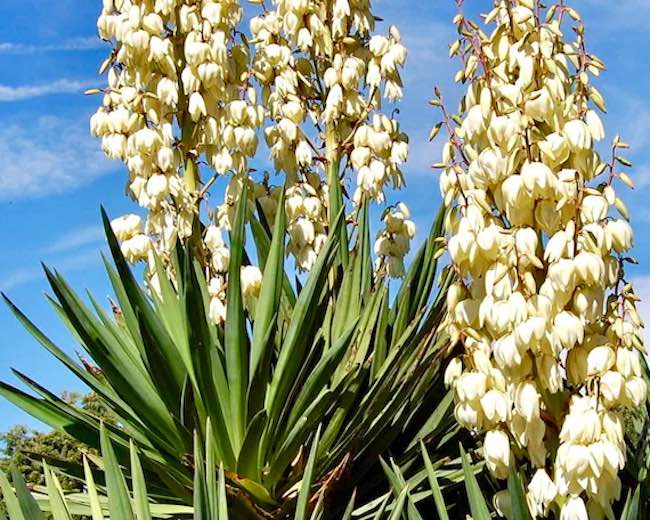Winter Damage To Yuccas.

How to deal with Yuccas with winter damage
Yuccas, known for their hardiness, are generally resilient to cold temperatures. However, they are vulnerable to certain types of winter damage, particularly in regions with severe weather conditions. Understanding these risks and implementing protective measures can help maintain the health and beauty of these plants.
Types of Winter Damage in Yuccas
- Frost Damage: Yuccas are susceptible to frost damage, which primarily affects their leaves and stems. The frost causes the plant’s cells to freeze and rupture, leading to blackened, dead tissue. This type of damage is more likely when temperatures fall below freezing without adequate insulation for the plant.
- Snow Damage: In areas with heavy snowfall, yuccas can suffer from the weight of the snow pressing down on their leaves and stems. This pressure can lead to breakage or other structural damage to the plant.
- Cold Damage: Continuous exposure to cold temperatures can make the leaves and stems of yuccas brittle. This brittleness increases the risk of breakage, particularly in parts of the plant that are already weakened or damaged.
- Drought Damage: Even in winter, yuccas require a consistent watering schedule. If the soil becomes excessively dry, the plant can experience drought stress. This condition manifests as browning and dying leaves, which can weaken the plant’s overall health.
Preventative Measures and Recovery
- Insulation: To safeguard against frost and cold damage, it’s advisable to wrap the stems of yuccas with insulating materials. Burlap and horticultural fleece are excellent choices as they allow the plant to breathe while offering protection from the cold.
- Support for Snow-Prone Areas: In regions with heavy snowfall, it may be beneficial to provide physical support to the yucca’s leaves and stems to prevent breakage under the weight of snow.
- Regular Watering: Maintaining a consistent watering schedule during early winter during dry period is crucial to prevent drought stress. It’s important to balance this with the reduced water requirements of the plant during the colder months.
- Recovery from Damage: In milder winters, yuccas can often recover from winter damage. This recovery typically involves the growth of dormant shoots from the base of the stem. It’s important to monitor these new shoots and provide them with the care they need to thrive.
While yuccas are robust plants capable of enduring cold conditions, they do not naturally produce an “anti-freeze” in their stems like some other hardy plants. Consequently, in severe winters, particularly in the UK, they are at risk of frost, snow, and cold damage. By understanding these risks and taking appropriate preventative measures, gardeners can help ensure their yuccas remain healthy and attractive throughout the winter season.





